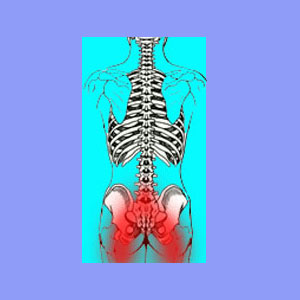
Saddle paresthesia describes a set of severe sciatica symptoms that can occur in the groin, perineum and buttocks. The condition is also sometimes known as saddle anesthesia. Paresthesia is defined as tingling and numbness in the affected area of the body. Saddle refers to the areas of the anatomy that would touch a saddle when one is riding a horse. These include the lower groin, perineum and buttocks regions. Therefore, we are discussing intermittent or chronic pins and needles, as well as feelings of subjective or objective numbness in these highly sensitive areas of the anatomy.
This essay explains saddle anesthesia conditions in vivid detail. We explore the causes of sciatica paresthesia, the neurological consequences and the typical treatments offered to correct the condition within the medical sector.
Causes of Saddle Paresthesia
Saddle paresthesia is a common sciatica symptom, but is most often found unilaterally in the muscular aspects of the buttocks, as well as in the leg or foot. Of course, this symptom can also occur bilaterally for a minority of patients who experience sciatica in both legs.
In saddle anesthesia conditions, the buttocks are also affected, but in this case, the symptoms are centered in the perineum and centerline area, not typically in the muscular anatomy. Many patients also express saddle anesthesia in the groin and possibly in the genitals themselves.
The usual sciatica-related explanation for this symptom set is cauda equina syndrome. This serious medical emergency describes a scenario in which the nerve roots in the lower lumbar and sacral spinal regions are compressed, usually as a grouping, within the central vertebral canal space. Depending on the degree of compression and the actual nerve roots affected, symptoms might range from severe typical sciatica expressions to far less common inclusions, such as paresthesia in the saddle region, incontinence and constipation.
Less commonly, lower spinal cord compression in the lower thoracic or upper lumbar zones might also cause paresthesia in these extremely delicate areas of the anatomy.
An alternate cause of spinally-motivated saddle anesthesia is certainly extreme cervical spinal stenosis. Many patients with dire canal impingement in the neck suffer lower body expressions and paresthesia in the buttocks, genitals and perineum as typical symptoms, particularly in the elderly and in patients who have suffered recent traumatic injury enacting the stenotic changes.
There is also a variety of disease process that might enact similar symptoms to those suffered in sciatica patients. For further information on these non-spinal causations, please consult with your doctor.
Consequences of Saddle Anesthesia
Paresthesia might be subjective in many cases. This describes a perception of tingling and numbness, although the patient can actually feel manual stimulation in the affected region. Many patients report this as a heavy and dull feeling, highlighted by sparks of pins and needles regularly or intermittently.
Paresthesia might also be an objective finding, in which patients demonstrate intermittent sparks of neurological tingling, yet most have no sensation in the affected region at all. They will not feel normal manual stimulation to a typical degree. Regardless of the variety of paresthesia expressed, the following are all possible consequences of saddle anesthesia:
Patient may not be able to stand or walk. The legs might be incredibly weak and dysfunctional. Patient may have balance and coordination problems in the legs.
Patients might demonstrate urinary or fecal incontinence. Patients may suffer fecal constipation or the inability to urinate easily or at all. Some patients actually suffer both contrasting expressions in tandem.
Patient is likely to suffer sexual dysfunction, regardless of being male or female. Patient might not be able to feel sexual stimulation, even if they are able to perform physically.
Patient might experience intermittent or chronic deep pain inside the anal sphincter or genitals. This is most often seen intermittently in combination with subjective paresthesia.
Lasting periods of neurological compression, and the worst instances of acute neurological compression, might leave lingering effects after resolution via successful treatment. Regeneration of neurological tissues rarely occurs once permanent damage is suffered, so every case of saddle anesthesia should be evaluated and possibly treated by a qualified physician immediately.
Treatment for Saddle Paresthesia
Since all spinally-motivated instances of saddle anesthesia involve some sort of compressive neuropathy in the vertebral anatomy, surgery is almost always the universal method of care for affected patients. Diagnosis should always include a comprehensive set of imaging studies of every area of the spine. This is crucial to pinpoint all possible symptomatic zones and to correlate the current expression to the most logical causative source.
Once a diagnosis has been achieved, treatment will usually revolve around surgical decompression of the spinal cord or spinal nerve roots. Procedural selection will depend greatly on the operating physician, the location of the stenosis and the particulars of the patient’s specific case profile.
The most commonly utilized surgical treatments include various approaches to laminectomy, foraminotomy and corpectomy. Many patients are also treated with spondylodesis, more commonly known as spinal fusion.
In rare instances of subjective minor paresthesia, nonsurgical treatment might be attempted using conservative or moderate care, such as chiropractic manipulation or spinal decompression, using the DRX9000 or a similar machine.
Remember that all cases of spinal nerve compression are serious issues that might require proper medical attention. Be sure to report all symptoms to a qualified physician and seek expert evaluation from a spinal neurologist as soon as possible.





